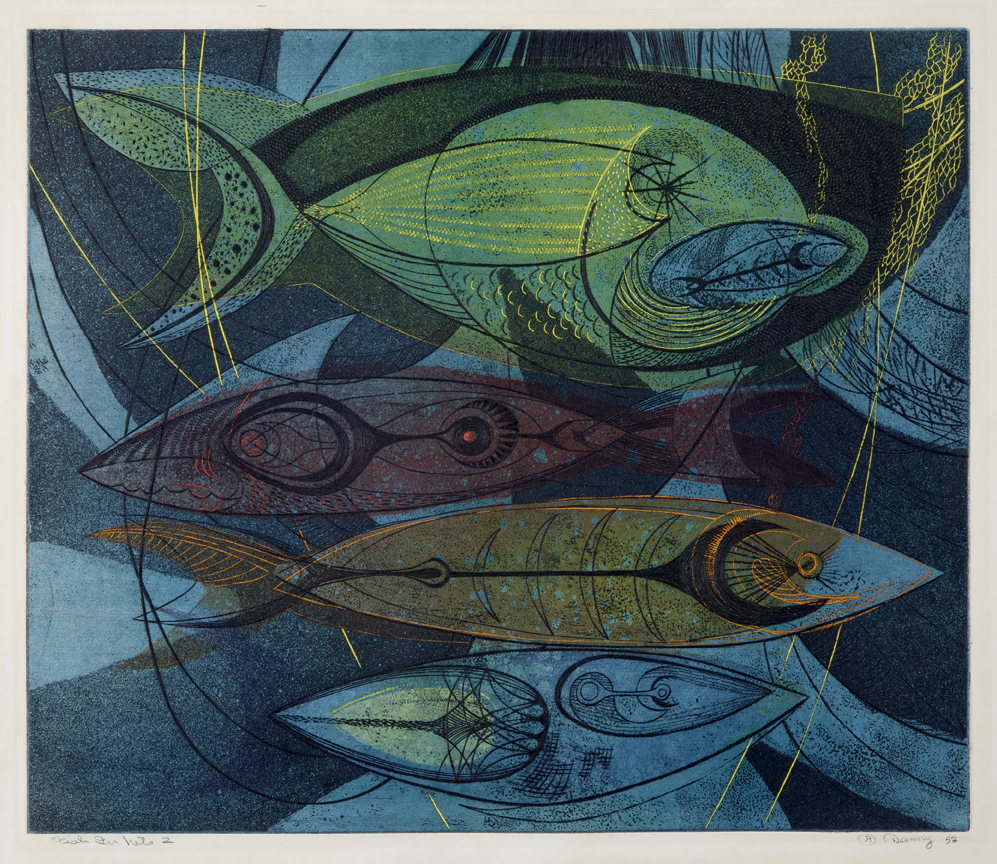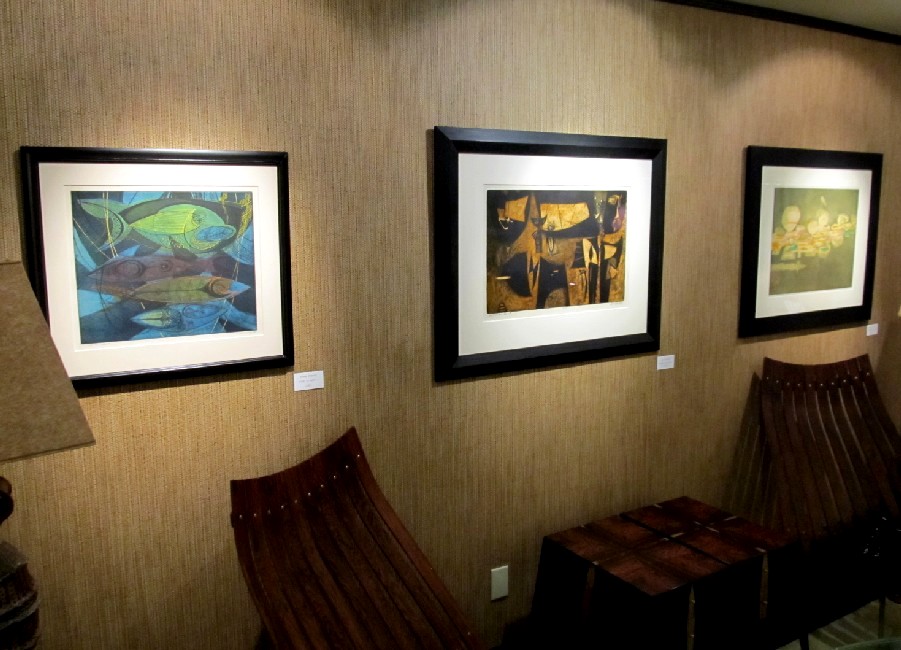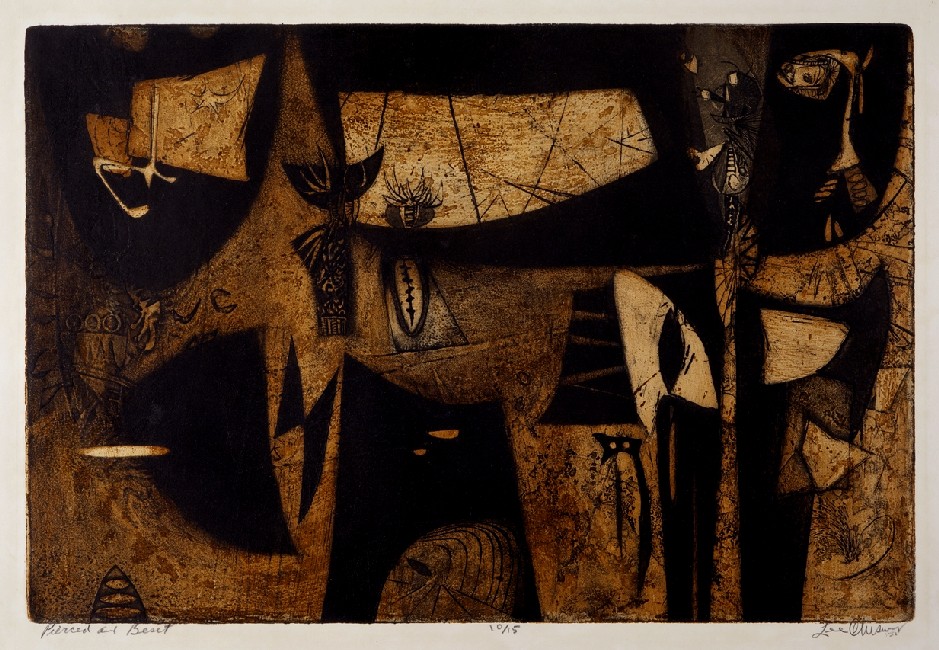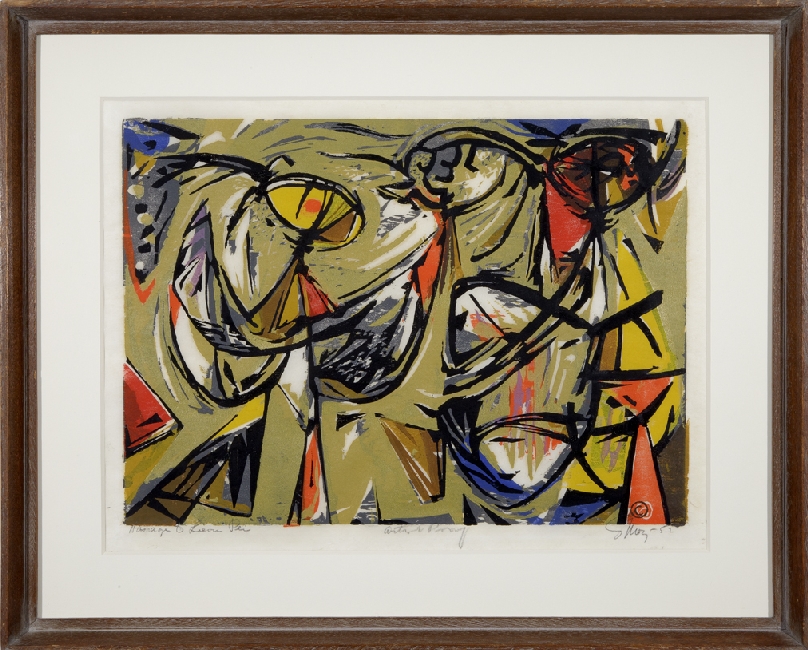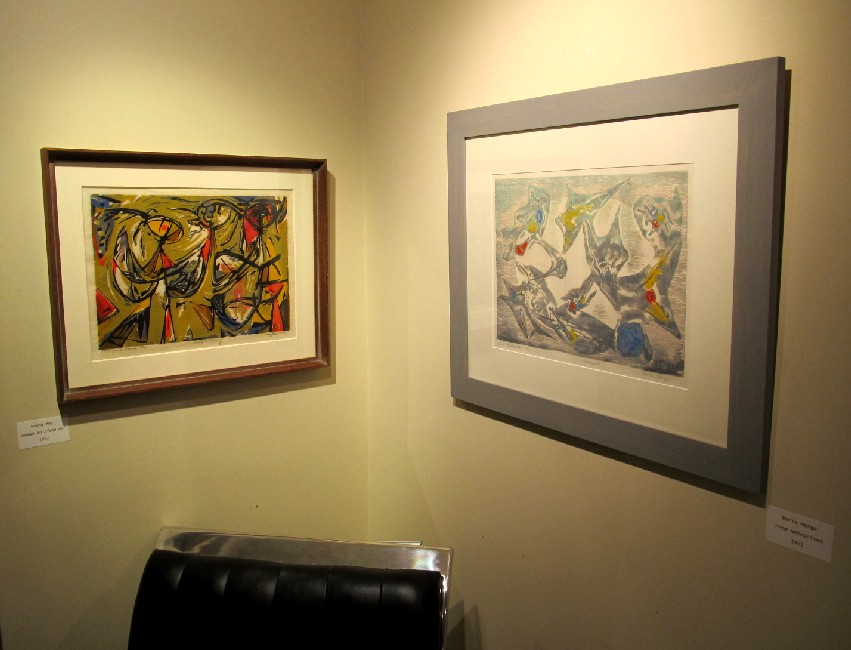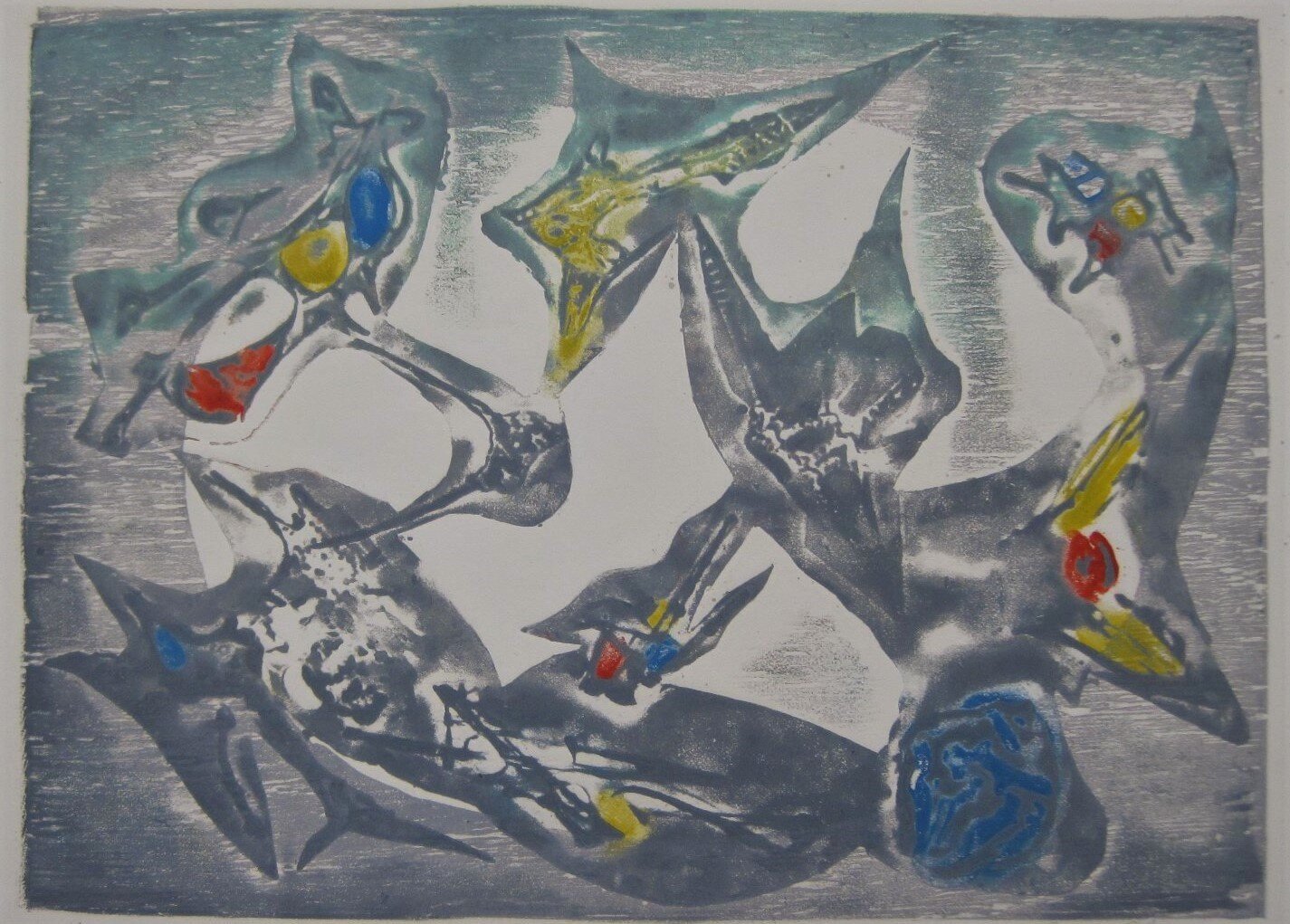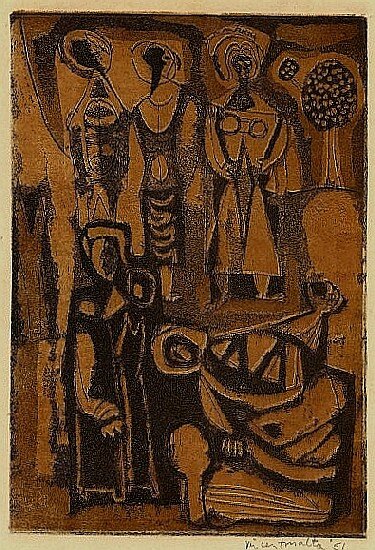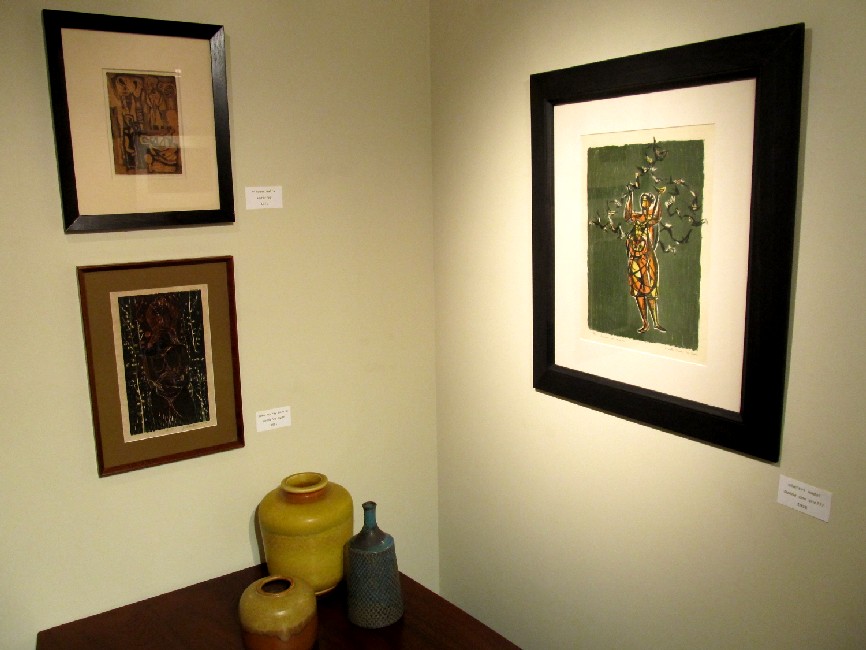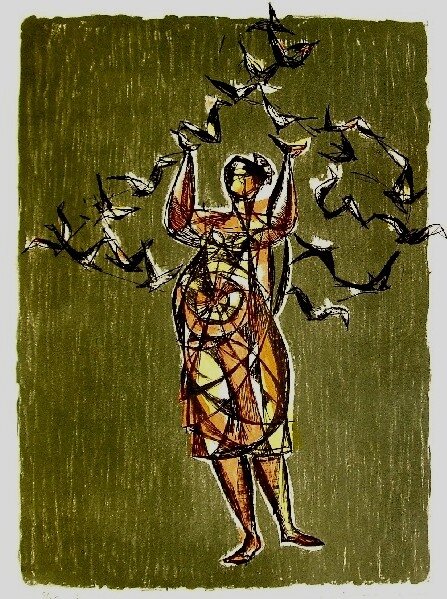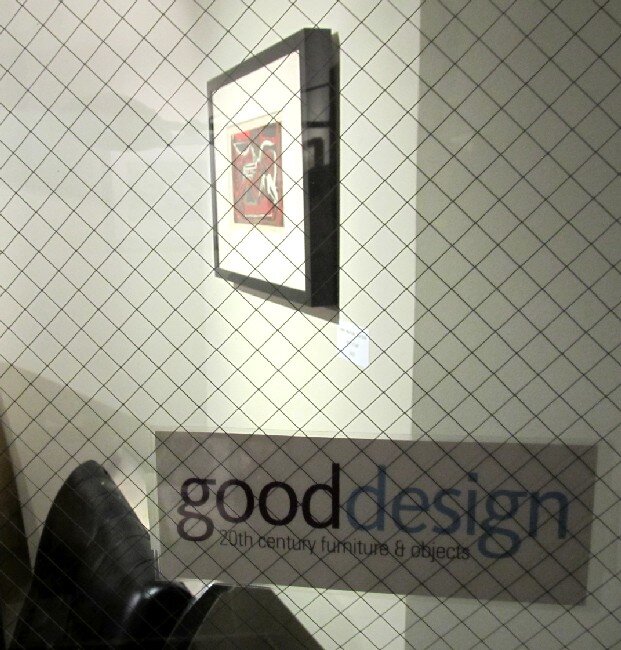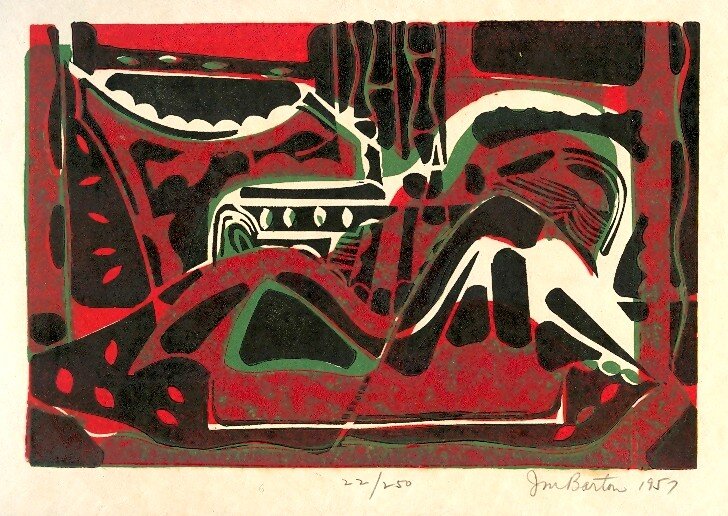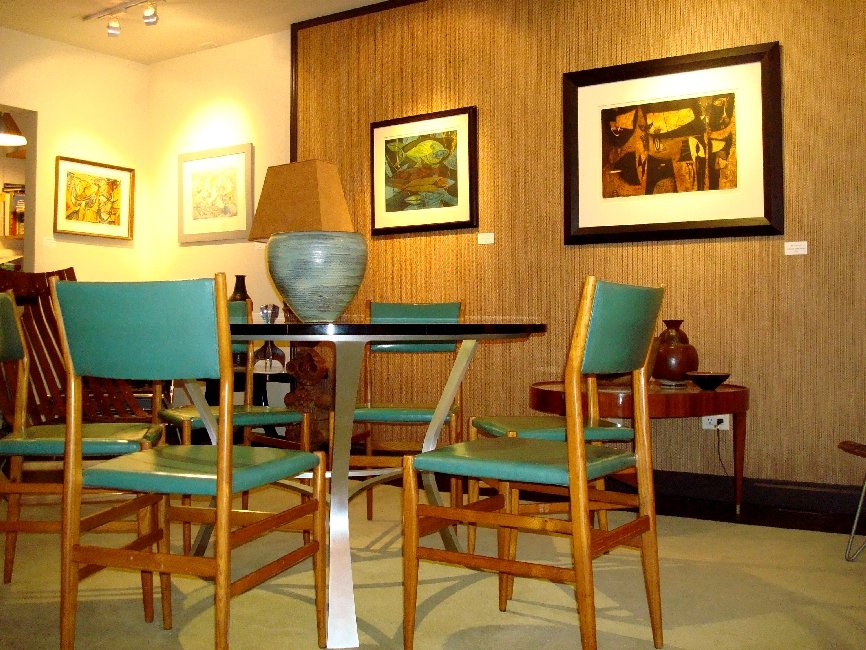In 1959 artist Lee Chesney wrote about the “magnetism inherent in the print media,” declaring that “printmaking presently occupies a position of interest among artists seldom paralleled even during the renaissance.” Chesney, although young, was himself a leader of the mid-20th century print movement, as an innovative creator and an articulate spokesman. One of Chesney’s most dynamic prints from the 1950’s, Pierced and Beset (an example of which is in the collection of the Museum of Modern Art) is included in an exhibition at Good Design, a Manhattan gallery of modern furniture and decorative arts. The exhibition, Image and Abstraction: American Color Prints of the 1950’s, includes other examples that are highly regarded by print connoisseurs as well as several rarely seen works by under-recognized artists. The show is organized by Alan Rosenberg, an art and design historian and curator.
The prints on view represent the spectrum of abstraction at play in the postwar American art scene, from the stylized natural imagery of Danny Pierce to the vigorous figurative expressionism of Seong Moy to the chance abstract effects of William Littlefield. Other artists in the exhibition include Barbara Neustadt, John Murray Barton, Vincent Malta, Boris Margo, Dimitri Hadzi and Irving Amen.
Artists of the post-war period working in print media reinvigorated a number of traditional techniques: the variety of methods on display include engraving, etching, woodcut, lithography and cellocut. Danny Pierce’s Fish In Nets 2 is a technically outstanding example that was described in Art News in 1953 as “a skillful application of soft-ground and aquatint for decorative textures and etching and engraving for calligraphic detail.” A 1958 article on Seong Moy’s wood block technique explained that the artist “builds and coordinates each color and maps out his blocks by painting on sheets of transparent celluloid.” Perhaps the most innovative technique was the Cellocut, invented by Boris Margo, in which a varnish of celluloid dissolved in acetone is applied to a flat surface (wood, copper, masonite), manipulated by the printmaker and printed as a relief block or intaglio. Margo’s print From Meteorites exhibits vivid color and subtle texture in an image that straddles biomorphic surrealism and abstract expressionism.
The multiplicity of techniques pushed color to the fore, building on line, texture and visual depth, with a vitality that was characteristic of the post-war period.
The artists in the show were not merely accomplished technicians however. These master craftsmen were also creative thinkers, exploring ideas such as mortality, space and time and questions of self-identity and self-expression. William Littlefield (who was a subject of a recent retrospective at the Cape Cod Museum of Art) said of his art that “identity is the clue, through movement experienced as a metaphorical action of becoming--the process is color structure of ambivalent figure-ground integration: the [image] becomes you by its color-structure action.” Indeed, the push and pull of his abstract imagery induce a sense of art/self contemplation in the viewer.
Literary references are to be found as well: Barbara Neustadt’s Lotus Eaters was inspired by a passage in Homer’s Odyssey: “Now whosoever of them did eat the honey-sweet fruit of the lotus chose to abide with the lotus-eating men, ever feeding on the lotus and forgetful of his homeward way.”
